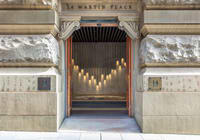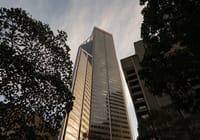
Net-zero ambitions clash with office reality in Australia
Australia’s corporate sector has its sights set on net-zero targets, but the offices they occupy are struggling to keep pace.
According to research from CBRE, the country’s office market is “not ready for net zero”, with genuine net-zero-ready buildings representing only a small fraction of total stock.
A net-zero building, as defined by CBRE, operates with minimal greenhouse gas emissions across its direct energy use, meaning full electrification, low-GWP (global warming potential) refrigerants, and renewable power sources. However, for many towers built decades ago with gas heating, outdated plant, and legacy systems, transitioning to this standard requires a level of investment, disruption, and complexity that owners and businesses can find hard to justify, citing Sydney as a prime example.
“Significant progress will be required for the Sydney CBD to meet the growing demand for highly sustainable office space going forward,” explains CBRE’s NSW office Research Lead, Thomas Biglands.
“While prime office stock in Sydney’s CBD has an average NABERS rating of 5.3 stars, the average rating for secondary office properties is only 4.5 stars and very few properties have fully electrified their energy usage.”
Only 3.2 per cent of NABERS-rated stock in the Sydney CBD is fully electric, which is a stark contrast to the corporate occupiers now demanding 5.5-star ratings, green leases, and verifiable decarbonisation pathways.
NABERS stands for the National Australian Built Environment Rating System and measures the environmental performance of buildings on a six-star scale, with six stars representing “market-leading” sustainability and one star indicating below-average performance.
Major corporations, from multinationals to government agencies, now view emission reductions as a non-negotiable part of their brand. Landlords are also pricing in the risk of climate-exposed, poor-performing buildings. Meanwhile, global standards and disclosure frameworks are placing mounting pressure on owners to reduce operational emissions, rather than simply offset them.
Yet the landscape is complicated by politics. Nationally, the commitment to net zero is no longer a policy baseline for some major parties. The National Party recently dumped its support for a 2050 net-zero target, with the Liberal Party following suit, promising to pursue interim climate targets should it form government. For developers and asset-owners whose retrofit budgets and leasing strategies often hinge on regulatory certainty, this introduces another layer of confusion.
Still, the market is not standing still, with some landlords showing what’s possible. Melbourne’s Chadstone precinct, which incorporates mixed-use retail, commercial offices, and hospitality, has announced that it has achieved operational net-zero carbon certification under the Climate Active standard. Through electrification, energy efficiency upgrades, and a blend of on-site and purchased renewable energy, the precinct has demonstrated that high-intensity environments can deliver emissions reductions without compromising performance.
For the broader office market, however, CBRE suggests that the next decade will amplify the flight to quality. Buildings that are electrified, highly rated, renewable-powered, and transparently report their performance will dominate tenant demand. Older, gas-reliant, inefficient buildings risk becoming stranded unless owners develop credible, time-bound pathways to net-zero results.
Occupiers are increasingly open to working with landlords who can demonstrate a transition plan, even if fully executing it is years away. The buildings that respond now will remain competitive; the rest face a future where “good enough” simply isn’t enough for a net-zero world.
“Not every building can be net-zero ready today. But what matters is having a credible, time-bound decarbonisation strategy. Investors and occupiers are willing to work with landlords who demonstrate a clear pathway to compliance,” explains Su-Fern Tan, head of ESG Pacific at CBRE.










